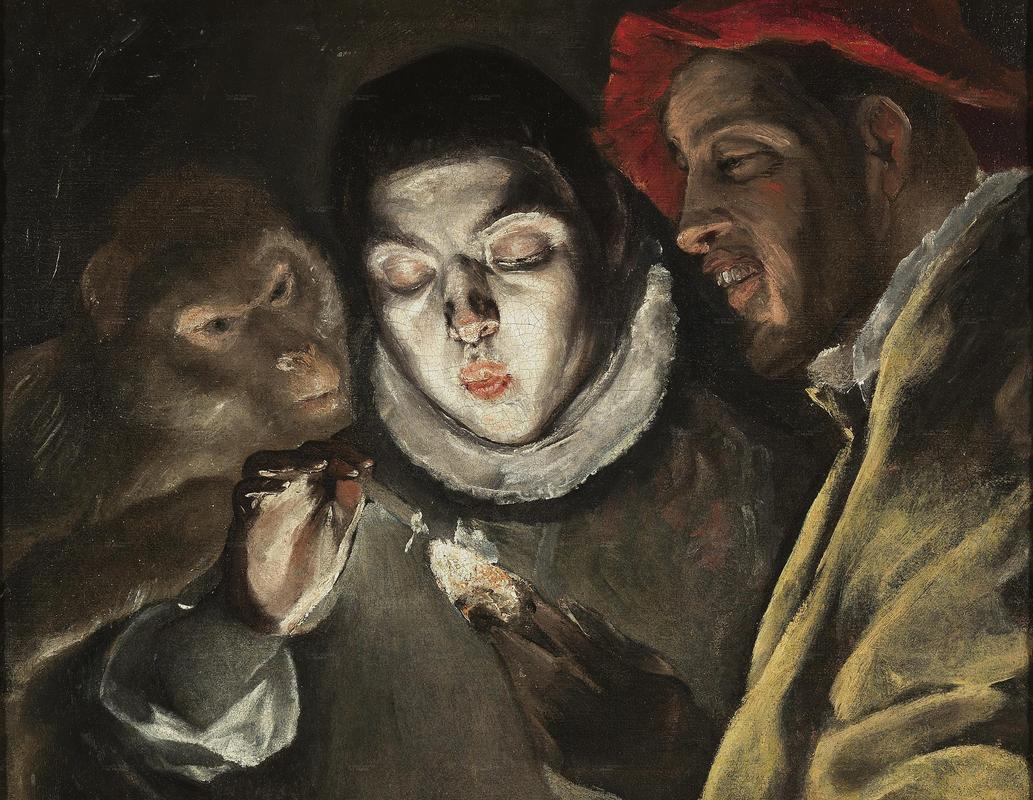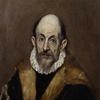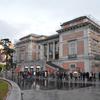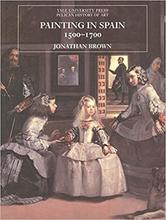More about Fable
- All
- Info
- Shop

Contributor
Writers on El Greco's Fable (An Allegory of a Boy Lighting a Candle in the Company of an Ape and a Fool) tend to have a field day talking about the apparently sexual symbolism and metaphorical suggestions of the work.
It seems that something about a monkey, a grinning man, and a boy blowing on a candle just screams "sexytime" to generations of art historians. This made me scratch my head a bit until I read about the allegory which they constructed around these figures, which we'll discuss below. In the context of El Greco's post-Roman period in Spain, where he produced this work and its companion versions, which hang in the Virginia Kraft Payton in Florida, the Nazionale di Capodimonte Museum in Naples, the Harewood Collection in Leeds, and the National Gallery of Scotland in Edinburgh, biographers suggest that the artist brought the stories of ancient Rome to his work.
In particular, there are stories in the Natural Histories of Pliny the Elder of the sculpture by Lycius called Boy Blowing on a Dying Fire. There is also a painting of the same subject by Philiscus, and a painting by Antiphilus that wowed critics for its realistic portrayal of light. Before you start searching museum catalogues, keep in mind that these works are all lost, probably during one of the many military campaigns that defined the ancient society, but the general point is that El Greco was pursuing a reference to a vintage theme, cultivated in the clique of Orsini, as they admired the Roman artists for aiming at a very high level of naturalistic detail. I've never tried to draw someone blowing on a flame, but surely my first several, or several dozen, attempts would barely pass the Pictionary test. We can appreciate El Greco's ambition: the way fire, flickering under the force of breath, casts light on people's faces, is a huge challenge to paint, and the way in which he achieves it communicates a very specific feeling and atmosphere.
These ideas are all based on things that we know, and in that regard they depart from most of the writing on this painting which focuses on the possibility that the image is an allegory for vice, represented by Curious George on the left there, and folly, represented by the gleeful man on the right, and their influence on sexual behavior. I don't know about that, but I so know that sex is one of the more challenging essential aspects of life to discuss in a frank and polite way and that, in a Biblical framework, the Divine Being created everything with the Word, except for us - we came from breath itself.
Sources
- "An Allegory (Fábula)." National Galleries Scotland, https://www.nationalgalleries.org/art-and-artists/34184/allegory-f%C3%A….
- Andrade, José Manuel Pita. "Fábula, Una [El Greco]." Museo del Prado, https://www.museodelprado.es/aprende/enciclopedia/voz/fabula-una-el-gre….
- Casper, Andrew R. Art and the Religious Image in El Greco's Italy. University Park, PA: Penn State Press, 2014.
- Davies, David. El Greco: mystery and illumination. Edinburgh: National Gallery of Scotland, 1989.
- Emerging Infectious Diseases, Volume 8, Issues 1-6. Washington, D.C.: National Center for Infectious Diseases, Centers for Disease Control and Prevention (CDC), 2002.
- Molesworth, Bagot Gosset Francis. Pompei as it was & as it is: The Destruction of Pompei, Life in Italy in the First Century, Italian Villas of the Period of Pompei, and the Poetry, Painting and Sculpture of the Time. London: Skeffington, 1903.
- Satz, Aura, and Jon Wood. Articulate Objects: Voice, Sculpture and Performance. Oxford: Peter Lang, 2009.
Featured Content
Here is what Wikipedia says about The Fable (El Greco)
The Fable (Spanish - La Fábula) is a 1580 allegorical painting by El Greco, produced early in his Toledan period and now in the Museo del Prado in Madrid.
The light effects and use of colour show the influence of Jacopo Bassano, which the painter had picked up in Italy. It shows a monkey and a rogue flanking a boy blowing on an ember or taper. The central figure was a frequent theme for the artist (he had painted it a few years earlier as El Soplón for example), drawn from a story in Pliny the Elder's Naturalis Historia.
The painting is probably a moralising warning about the consequences of lust, the ember bursting into flame symbolising sexual arousal, and the monkey and the buffoon the ever-present twin dangers of vice and folly.
Check out the full Wikipedia article about The Fable (El Greco)














The Fable by Greco displays a monkey, boy, and man looking over a flicker of light. Even though the painting as a whole looks dark, I discovered that Greco learned this technique of portraying light and applied his new skills in this painting. There is a unique sort of texture to this piece, as a viewer can see the some of the individual brush strokes.